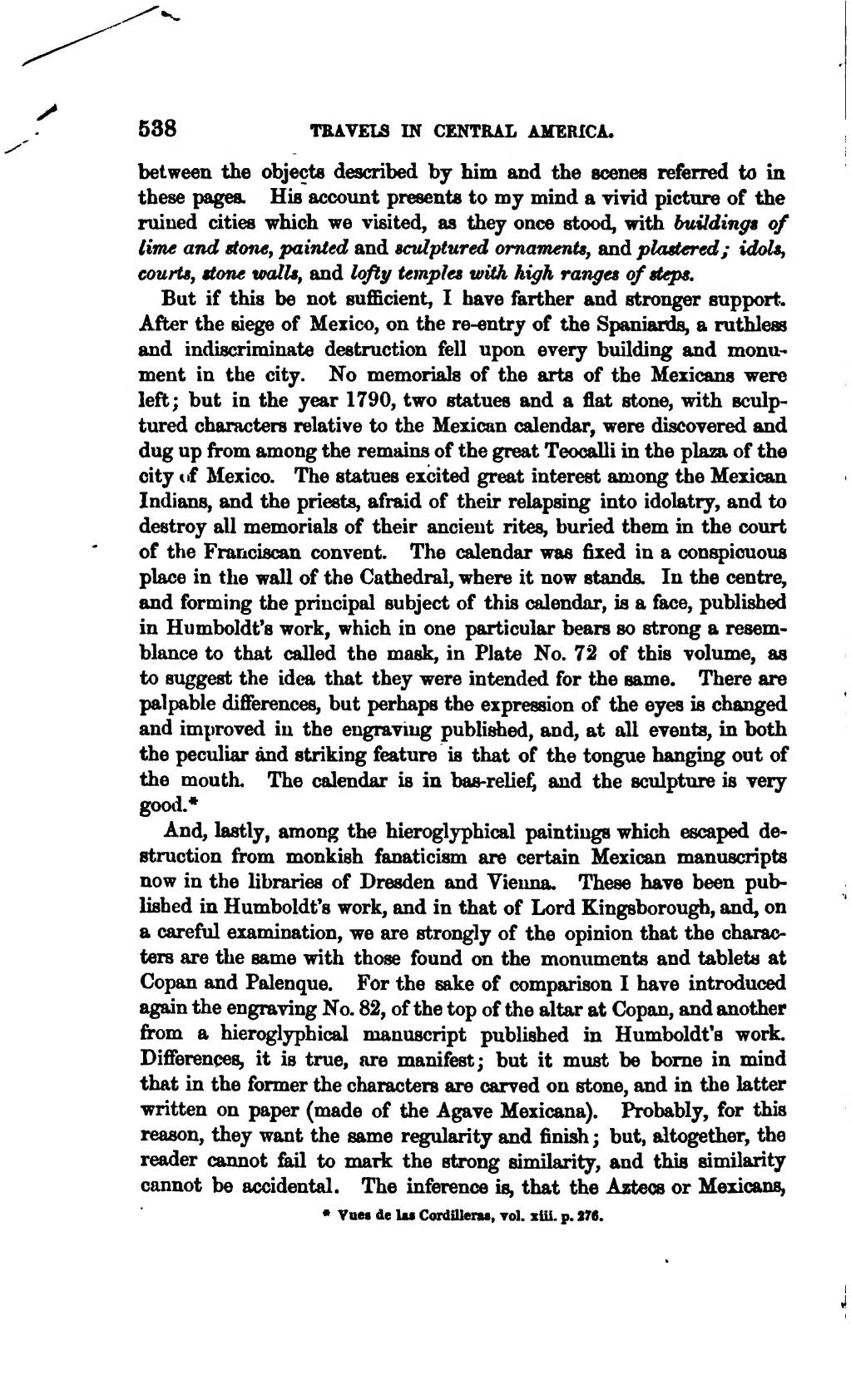between the objects described by him and the scenes referred to in these pages. His account presents to my mind a vivid picture of the ruined cities which we visited, as they once stood, with buildings of lime and stone, painted and sculptured ornaments, and plastered; idols, courts, stone walls, and lofty temples with high ranges of steps.
But if this be not sufficient, I have farther and stronger support. After the siege of Mexico, on the re-entry of the Spaniards, a ruthless and indiscriminate destruction fell upon every building and monument in the city. No memorials of the arts of the Mexicans were left; but in the year 1790, two statues and a flat stone, with sculptured characters relative to the Mexican calendar, were discovered and dug up from among the remains of the great Teocalli in the plaza of the city of Mexico. The statues excited great interest among the Mexican Indians, and the priests, afraid of their relapsing into idolatry, and to destroy all memorials of their ancient rites, buried them in the court of the Franciscan convent. The calendar was fixed in a conspicuous place in the wall of the Cathedral, where it now stands. In the centre, and forming the principal subject of this calendar, is a face, published in Humboldt's work, which in one particular bears so strong a resemblance to that called the mask, in Plate No. 72 of this volume, as to suggest the idea that they were intended for the same. There are palpable differences, but perhaps the expression of the eyes is changed and improved in the engraving published, and, at all events, in both the peculiar and striking feature is that of the tongue hanging out of the mouth. The calendar is in bas-relief, and the sculpture is very good.[1]
And, lastly, among the hieroglyphical paintings which escaped destruction from monkish fanaticism are certain Mexican manuscripts now in the libraries of Dresden and Vienna. These have been published in Humboldt's work, and in that of Lord Kingsborough, and, on a careful examination, we are strongly of the opinion that the characters are the same with those found on the monuments and tablets at Copan and Palenque. For the sake of comparison I have introduced again the engraving No. 82, of the top of the altar at Copan, and another from a hieroglyphical manuscript published in Humboldt's work. Differences, it is true, are manifest; but it must be borne in mind that in the former the characters are carved on stone, and in the latter written on paper (made of the Agave Mexicana). Probably, for this reason, they want the same regularity and finish; but, altogether, the reader cannot fail to mark the strong similarity, and this similarity cannot be accidental. The inference is, that the Aztecs or Mexicans,
- ↑ Vuea de las Cordilleras, voI. xiii. p. 276.
